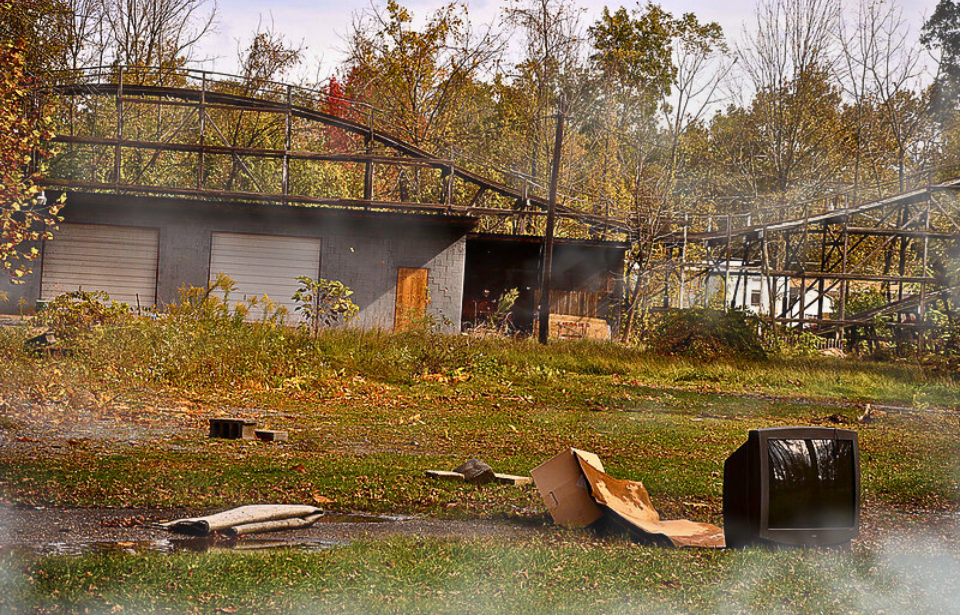The remnants of America’s abandoned sites offer eerie trips into the past. From amusement parks left to return to nature, to decaying sanatoriums and (supposedly) haunted prisons, these sites capture our imaginations with their ghostly silence and histories. The following are just some of the most spine-tingling abandoned locations in the United States.
Kennecott, Alaska
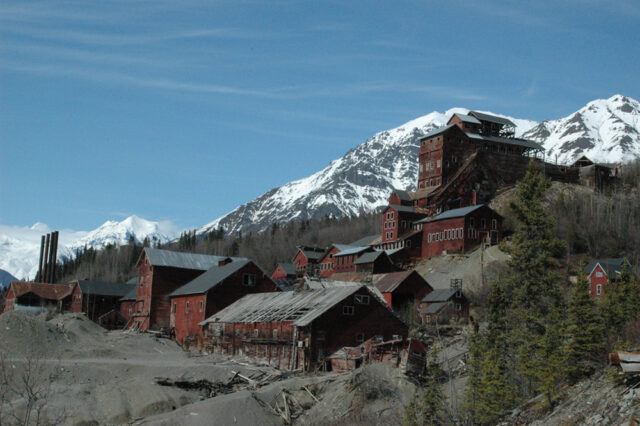
The ghost town of Kennecott, Alaska, is located in Wrangell-St. Elias National Park & Preserve. Established in the early 1900s, it was once a booming copper mining town that was home to one of the richest copper mines in the world. While it saw growth and success in the first few decades of its existence, by the 1930s, the area’s copper resources had been fully exhausted, leading to the settlement’s abandonment.
Today, Kennecott is a preserved historical site that offers visitors a trip back to the region’s mining era. While its mountainous backdrop is stunning, it’s eerie to stand in a once-bustling community that’s now frozen in time.
Joyland Amusement Park – Wichita, Kansas
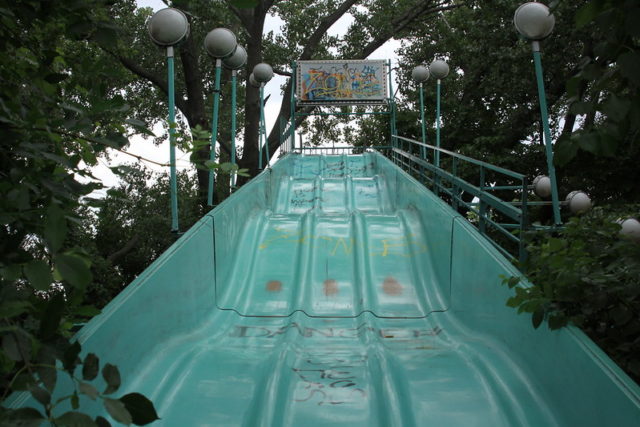
Joyland Amusement Park in Wichita, Kansas, was once the largest and most popular theme park in the state, bringing in visitors from 1949 until its closure in 2004. The attraction featured a variety of rides, including the classic wooden roller coaster that had a top speed of 50 MPH, a carousel, and various others geared toward both families and thrill seekers.
Despite its initial popularity, Joyland fell into disrepair following its closure, with much of the structures deteriorating after years of being left to the elements. While efforts to restore and preserve the park were made, they were ultimately unsuccessful, leaving the site as a nostalgic reminder of Wichita’s past.
Peoria State Hospital – Bartonville, Illinois
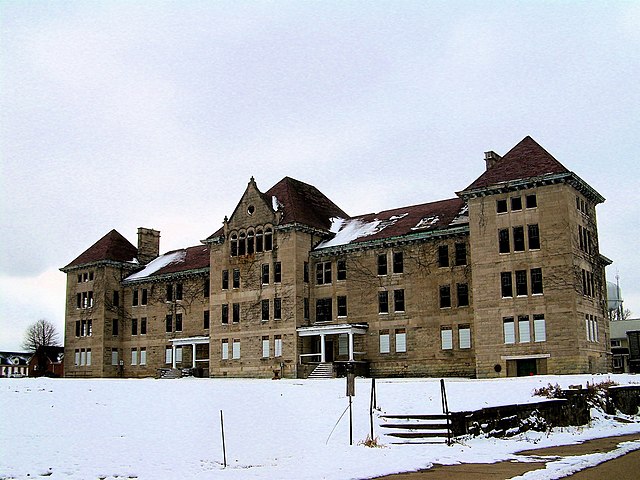
Peoria State Hospital, in Bartonville, Illinois, was a mental health institution that operated from 1902-73. Originally known as the Illinois Asylum for the Incurable Insane (oof, not a great name), it was considered “progressive” for its time, with an emphasis on humane treatment and the therapeutic value of work and community.
Under the leadership of superintendent Dr. George Zeller, the hospital gained a reputation for compassionate care, which was in contrast to the often-harsh conditions of other asylums. The sprawling campus included numerous buildings and cottages, some of which are still standing today.
Despite its closure, Peoria State Hospital remains of interest to the public, with many drawn to the facility by rumors of it being haunted by those who were once treated there.
Overlook Mountain House – Catskill Mountains, New York
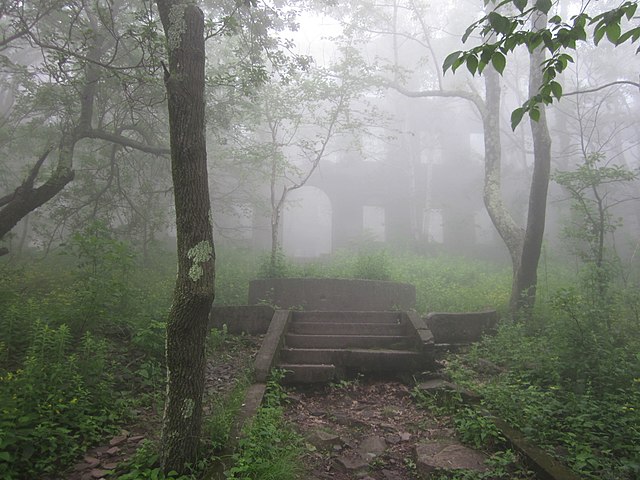
Overlook Mountain House, in New York‘s Catskill Mountains, was once a grand hotel designed to be a luxurious retreat for wealthy vacationers in the late 19th and early 20th centuries. The place, however, was plagued by misfortune, with several iterations of the building being destroyed by fire, including the final structure in the 1920s.
Today, the ruins of the Overlook Mountain House serve as an eerie reminder of the region’s bygone time of lavish and grandiose mountain resorts. Those who visit the area are drawn not only to the remnants of the building, but also the stunning views from the summit.
Lake Shawnee Amusement Park – Princeton, West Virginia
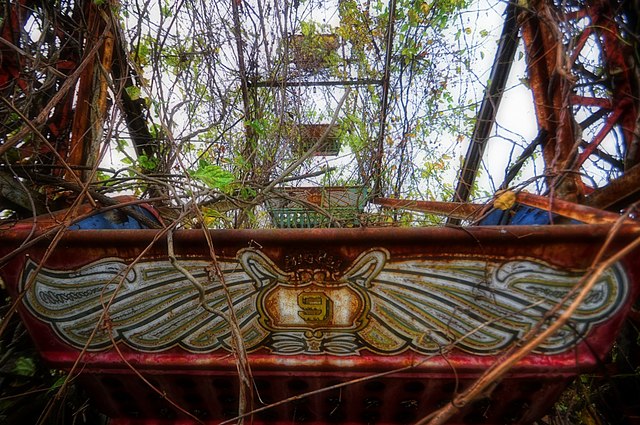
Lake Shawnee Amusement Park in Princeton, West Virginia, is a chilling abandoned attraction with a history of thrilling fun and devastating tragedy. Established in the 1920s on the site of the 1785 Clover Bottom Massacre, the theme park was popular among locals and featured such classic attractions as a Ferris wheel and swing rides.
It gained notoriety after several tragic incidents occurred, including the deaths of at least two children, which led to the park’s closure in 1988. Adding to its eerie reputation, the land was later found to have been a Native American burial ground, further intensifying tales of paranormal activity.
Today, the abandoned rides and overgrown grounds of Lake Shawnee Amusement Park draw ghost hunters and other curious minds.
Trans-Allegheny Lunatic Asylum – Weston, West Virginia
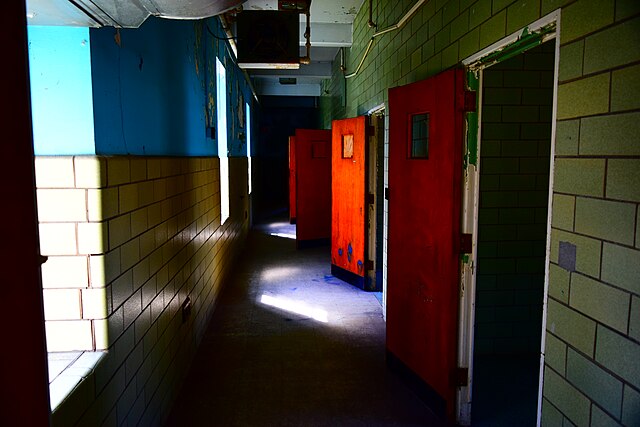
The Trans-Allegheny Lunatic Asylum in Weston, West Virginia, was a Gothic-style psychiatric hospital that operated from 1864- 1994 (it would have opened earlier, but construction work was interrupted by the outbreak of the American Civil War). Originally designed to house 250 patients, it became overcrowded, at one point holding more than 2,400. As could be expected, this led to deteriorating conditions and treatment practices.
Known for its imposing architecture and grim history, the Trans-Allegheny Lunatic Asylum witnessed immense suffering. Today, it’s a preserved historical site and a destination for ghost tours and paranormal investigations, with many drawn by its reputation as one of the most haunted places in the United States.
Chicago Freight Tunnels – Chicago, Illinois
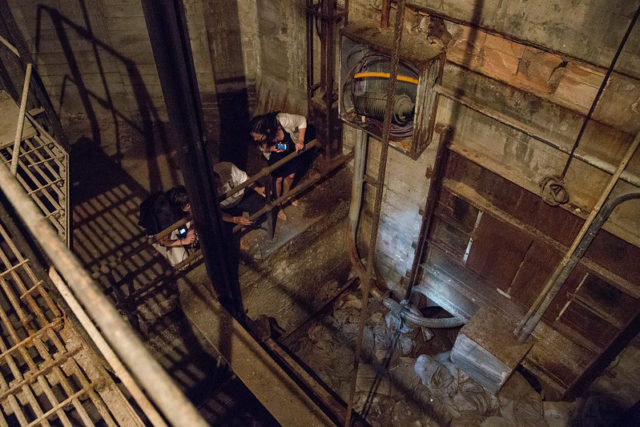
The abandoned Chicago Freight Tunnels are hidden beneath the city’s streets. Under construction from 1900-09 and spanning over 60 miles, these narrow, 40-foot-deep tunnels were designed to transport coal, ash and other goods throughout downtown Chicago, helping to reduce surface traffic. For decades, they played an important role in industrial operations – until there were advancements in transportation that made them obsolete.
The tunnels were largely forgotten until 1992, when they gained renewed attention after being overrun with water during the “The Great Chicago Flood,” which caused extensive damage to the buildings and infrastructure above. Today, the Chicago Freight Tunnels remain sealed and inaccessible to the public, but that hasn’t stopped urban explorers from finding their way into them.
Santa Claus, Arizona
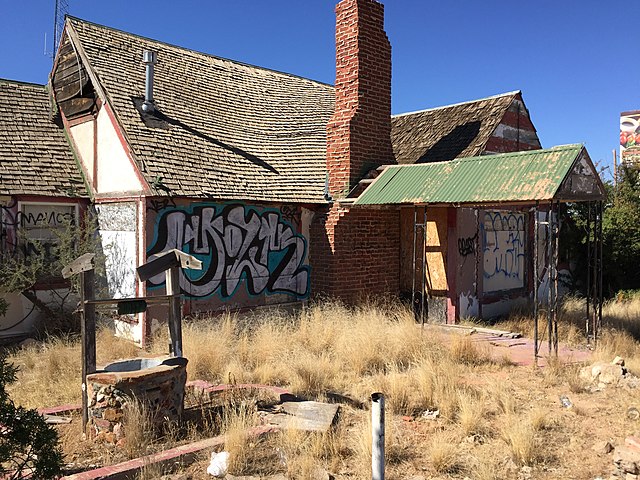
Santa Claus, Arizona, is a failed holiday-themed attraction in the Mojave Desert. Established in 1937 by entrepreneur Nina Talbot, the town was designed as a Christmas-themed tourist stop, complete with festive buildings, a post office that would stamp letters with a “Santa Claus” postmark and holiday decorations year-round.
Despite its initial popularity, the novelty quickly wore off. By the 1970s, Santa Claus began its decline, and while attempts were made to revitalize the attraction, they were unsuccessful, leading to its abandonment.
Today, the faded and decaying remnants of the site stand as an eerie relic of a kitschy idea that couldn’t withstand the test of time.
Old Idaho State Penitentiary – Boise, Idaho
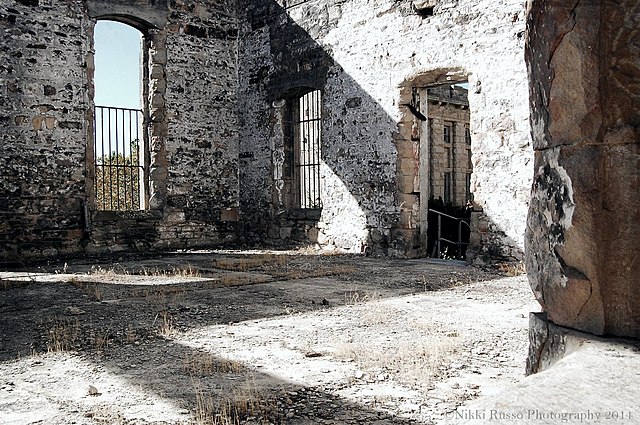
The Old Idaho State Penitentiary in Boise, Idaho, operated from 1872-1973. Originally built to house some of the most dangerous criminals in the Idaho Territory, the prison expanded to comprise over 30 buildings, including cell blocks, a solitary confinement unit and gallows. The prison became notorious for its harsh conditions, overcrowding and numerous riots, including a major one in 1971 that contributed to its eventual closure.
Today, visitors can explore the prison’s history, walk through the cell blocks and learn about the infamous inmates who were once held there. The site is also known for its ghostly encounters, adding an eerie allure to its historical significance.
Hudson River State Hospital – Poughkeepsie, New York
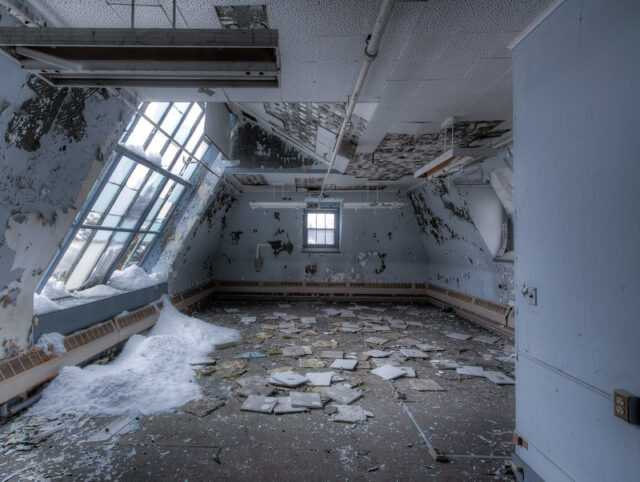
Hudson River State Hospital in Poughkeepsie, New York, was a psychiatric institution that operated from 1871-2003. Designed by architects Frederick Clarke Withers, Calvert Vaux and Frederick Law Olmsted, the hospital’s main building was an example of the popular Gothic Revival style, which reflected the progressive treatment philosophies of Dr. Thomas Story Kirkbride.
The facility was intended to provide a peaceful, therapeutic environment for patients, with expansive grounds and a grand, castle-like structure. However, like similar institutions, Hudson River State Hospital eventually became overcrowded and underfunded, leading to deteriorating conditions and a decline in patient care.
Followings its closure, the site fell into disrepair, with its once-majestic buildings now partially abandoned and decaying.
Rock-A-Hoola Waterpark – Newberry Springs, California
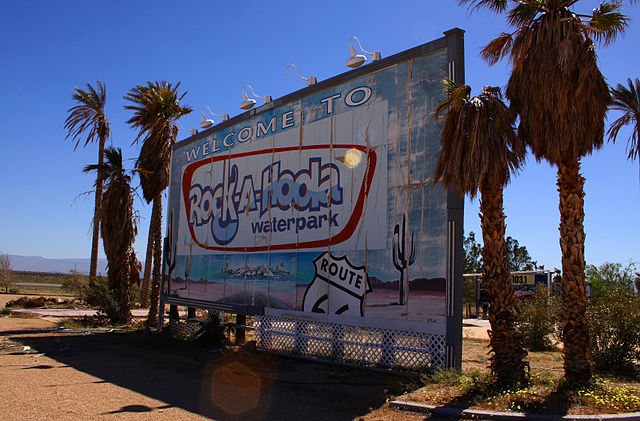
Rock-A-Hoola Waterpark (formerly Lake Dolores Waterpark) was once a thriving desert oasis in Newberry Springs, California. Opened in 1962, it was one of the first major waterparks in the United States and had a variety of popular attractions, including water slides, wave pools and a man-made lake.
With its vibrant atmosphere, Rock-A-Hoola drew visitors from across the state. However, it struggled with financial difficulties and changing ownership, leading to its closure in 2004. After this, it fell into disrepair, leaving behind a collection of abandoned water attractions and structures. Despite attempts at redevelopment and rejuvenation, the park remains abandoned.
Old Valmeyer, Illinois
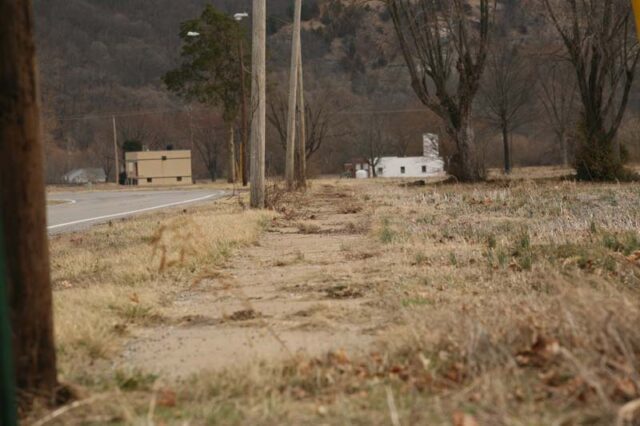
Old Valmeyer, Illinois, is a ghost town located on the banks of the Mississippi River. Founded in the early 19th century, it was a thriving community until it was devastated by the Great Flood of 1993. Floodwaters inundated the town, leading to significant destruction and forcing residents to evacuate.
In the wake of the disaster, the decision was made to relocate to higher ground. The new Valmeyer was built several miles away, while the original location was abandoned. Today, the remnants of Old Valmeyer are marked by deserted streets and crumbling buildings.
Cementland – St. Louis, Missouri
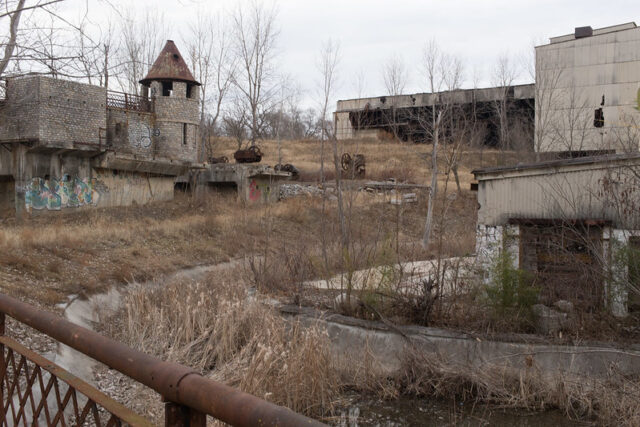
Cementland in St. Louis, Missouri, is an abandoned art installation by artist Bob Cassilly. Originally envisioned as a sprawling, whimsical theme park featuring concrete sculptures and interactive installations, the site underwent construction in the 1990s.
The project aimed to transform a former cement factory into a fantastical landscape filled with imaginative structures. However, it faced several challenges, including financial difficulties and zoning issues, which led to work being stalled. What’s more, it was also plagued by the death of Cassilly, whose passing is still a topic of mystery.
City Methodist Church – Gary, Indiana
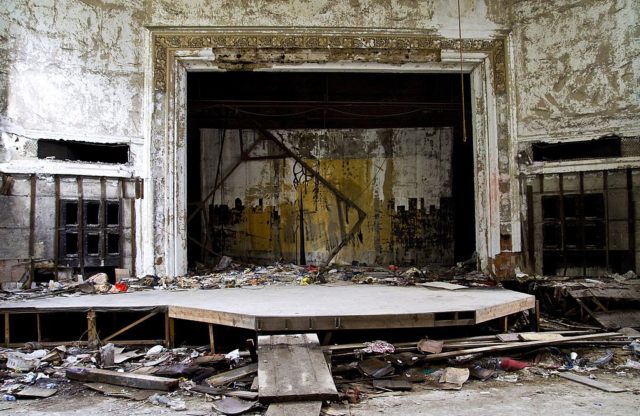
City Methodist Church in Gary, Indiana, is a striking example of urban decay and architectural grandeur. Built in 1925, this once-majestic Gothic Revival structure was a beacon of hope and community for the city’s residents, with its stained glass windows, ornate stonework and towering spire. However, as Gary’s industrial economy declined and the city’s population began to dwindle, the church fell into disrepair and was eventually abandoned in the 1970s.
Despite its derelict state, the church remains a prominent symbol of the city‘s past, with its crumbling walls and desolate interior drawing urban explorers and photographers.
Six Flags New Orleans – Louisiana
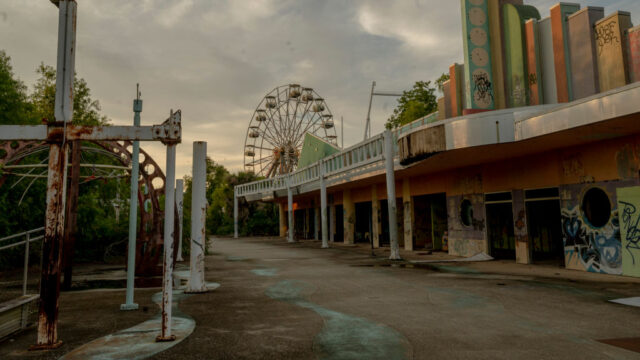
Six Flags New Orleans was an amusement park that operated from 2000, until it was severely damaged by Hurricane Katrina in ’05. Formerly known as Jazzland, it was rebranded and expanded by Six Flags. Unfortunately, Katrina caused extensive flooding to not just the park, but New Orleans as a whole, leaving behind widespread destruction.
Despite efforts to revive and redevelop the site, Six Flags New Orleans remains abandoned, with its rides and attractions being slowly reclaimed by Mother Nature. That being said, it appears there may be hope in the park’s future.
Yellow Dog Village, Pennsylvania
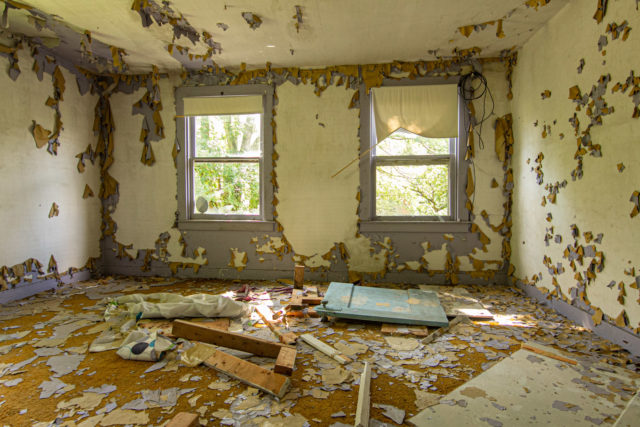
Located a few miles west of Kittanning, Pennsylvania, Yellow Dog Village is just one of the many abandoned mining towns that can be found across the United States. Founded following the opening of the nearby limestone mines, the settlement was home for many miners and their families – that is, until the Great Depression hit.
When the surrounding mines closed and the waters from which the townspeople drank were found to have eColi bacteria, the decision was made to abandon Yellow Dog Village. Today, between 19-26 structures remain, with the site’s future in limbo.
Bodie State Historic Park – California
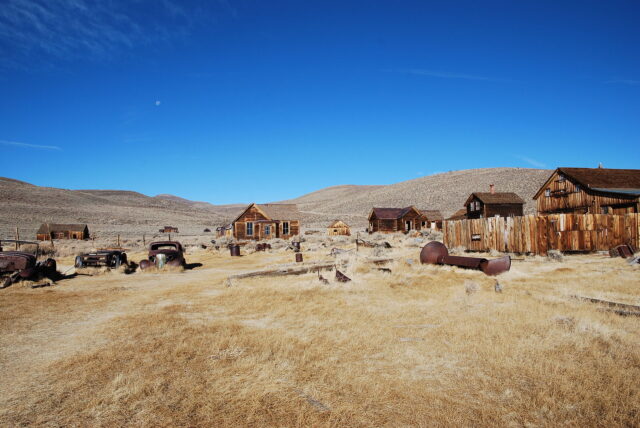
Bodie State Historic Park, located in the eastern Sierra Nevada mountains of California, is a ghost town that captures the essence of the American Old West. Founded in the 1870s during the gold rush, Bodie grew into a bustling mining town, with a population that once numbered around 10,000 people.
The town’s prosperity was driven by gold mining, but it faced a series of boom-and-bust cycles before being largely abandoned by the 1940s. Today, Bodie is kept as a state historical park, with over 100 buildings preserved in a state of “arrested decay,” meaning they’re kept in their last known condition and aren’t actively restored.
Visitors to Bodie can explore its weathered streets, historic buildings and artifacts, which offer a snapshot of this era in American history.
Fort Worden Historical State Park – Port Townsend, Washington
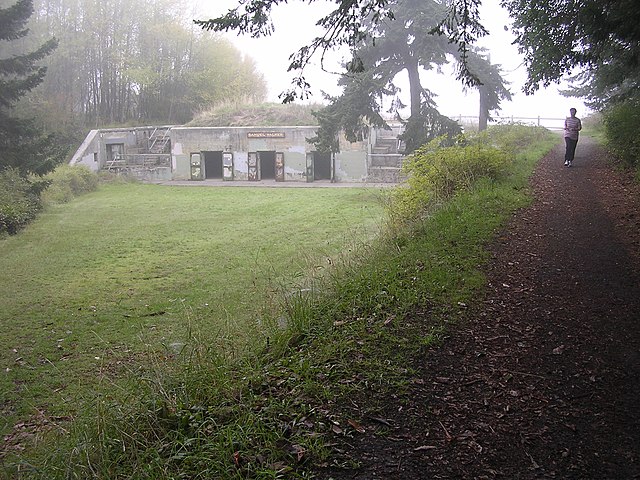
Fort Worden Historical State Park in Port Townsend, Washington, is a military fortification that played a key role in the defense of Puget Sound. Established as part of America’s coastal defense system, it was equipped with a variety of artillery and defensive structures to protect the region from potential naval threats. Following its deactivation in 1953, it was repurposed as a state park.
Today, Fort Worden Historical State Park preserves the site’s historic buildings, including barracks, gun batteries and the iconic lighthouse, offering visitors a glimpse into military history and stunning views of the surrounding coastal landscape.
Centralia, Pennsylvania
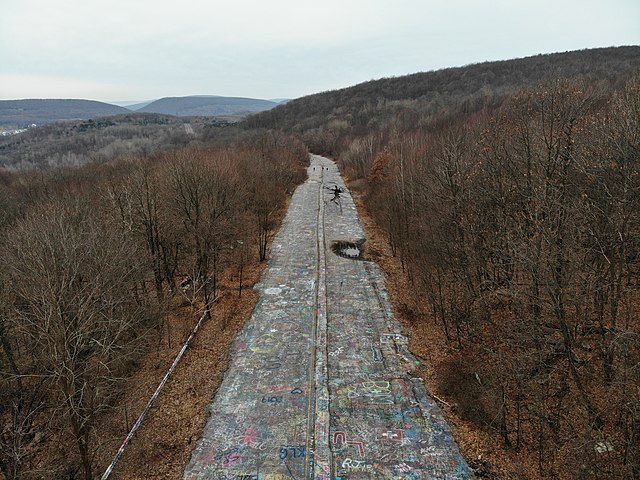
Centralia, Pennsylvania, is an example of a town rendered nearly uninhabitable by an underground disaster. Founded in the mid-19th century, it was a thriving coal mining community until 1962, when a fire ignited in a mine beneath the site. The blaze, which burns to this day, has caused dangerous subsidence and the release of toxic gases, leading to the evacuation of most residents; by the early 1980s, the government began relocating people, and the town was officially condemned.
Today, Centralia is a near-ghost town, with only a few remaining residents and its streets lined with overgrown vegetation and remnants of abandoned homes. The site has become infamous for its smouldering craters and fissures, which emit smoke and steam, creating an eerie landscape.
Forest Haven – Laurel, Maryland
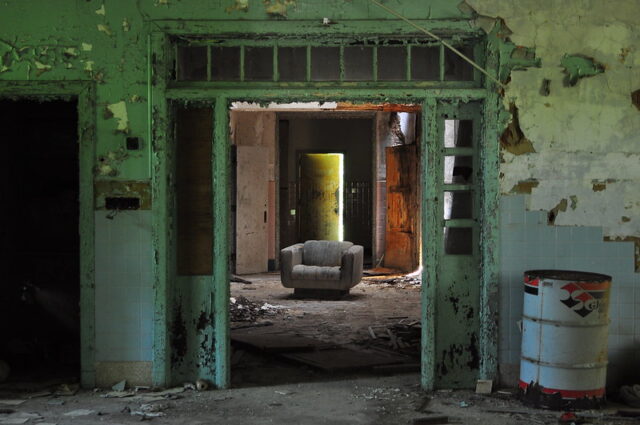
Maryland‘s Forest Haven Asylum was an institution designed to care for individuals with developmental disabilities, but its history was marked by controversy and tragedy.
Located in Laurel, the asylum was initially intended to provide a refuge, but, over time, it became notorious for its overcrowded conditions, inadequate medical care, and reports of abuse and neglect. The facility’s decline began in the 1960s, as criticism mounted over its treatment of residents and the lack of proper oversight. By the late 1970s, the asylum faced increasing scrutiny, and investigations revealed severe mistreatment and poor living conditions.
The institution was officially closed in 1991, and its buildings, now abandoned, stand as a reminder of the darker chapters in the history of institutional care in the United States.
Coaldale, Nevada
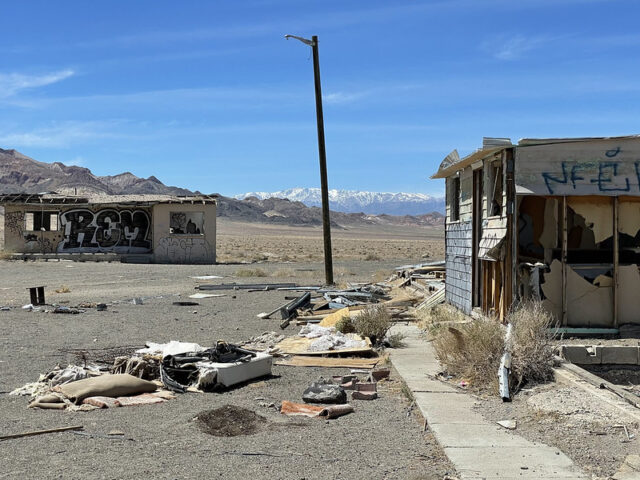
Coaldale, Nevada, is a small ghost town located in the remote western Nevada desert. Founded in the early 20th century during a brief coal mining boom, it was erected to support the operations that sought to exploit the area’s coal deposits.
The town’s existence was characterized by a fleeting sense of prosperity, with a modest community emerging around the mining activities. However, as coal resources dwindled and economic conditions changed, Coaldale rapidly declined. By the 1940s, the town was largely abandoned, leaving behind only remnants of its past, including crumbling buildings and mining infrastructure.
Salton Sea Beach, California
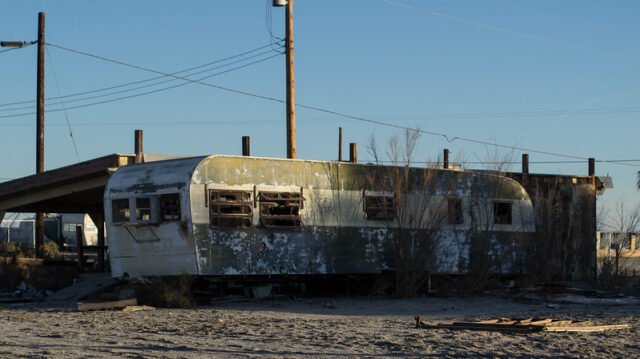
Salton Sea Beach, located in southeastern California, is a saline lake that was formed by accident in 1905, when an engineering mishap allowed the Colorado River to flood the Salton Basin. Initially heralded as a potential oasis and recreational paradise, it quickly attracted tourists and developers with promises of a burgeoning resort destination.
However, the lake’s ecology soon became problematic; high salinity and pollution levels began to devastate fish populations and harm local wildlife. As its health declined, so, too, did its appeal, leading to a dramatic decline in tourism and economic activity.
Today, Salton Sea is known for its environmental challenges, including toxic dust and the remnants of abandoned resorts.
Ellis Island Immigrant Hospital – Ellis Island, New York Harbor
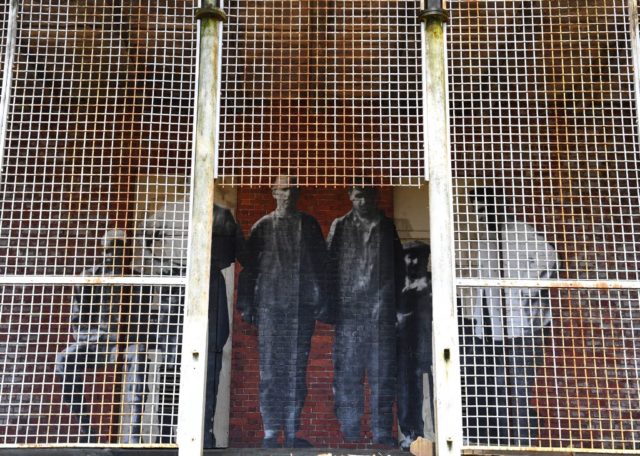
The Ellis Island Immigrant Hospital in New York Harbor saw the arrival of thousands of immigrants to the United States. Opened in 1902, it was part of the broader Ellis Island complex, which served as the primary entry point for new immigrants. Designed to provide medical examinations and care, the facility aimed to ensure that only those in good health entered the country.
The hospital’s operations included treating a range of ailments and contagious diseases, and it played a crucial role in managing public health concerns. However, it also faced challenges, including overcrowding and limited resources, and it was shuttered in 1951.
Waverly Hills Sanatorium – Louisville, Kentucky
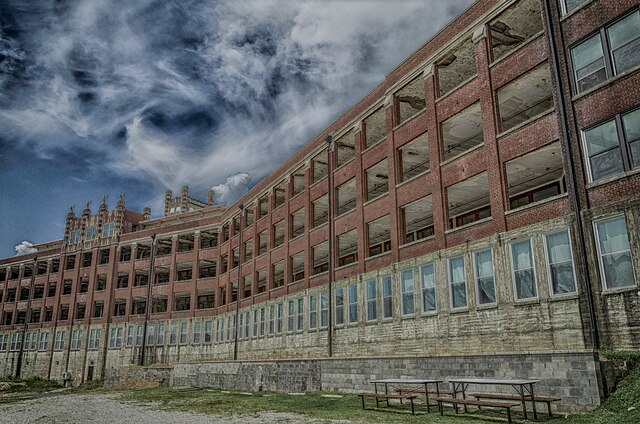
Waverly Hills Sanatorium in Louisville, Kentucky, was once a tuberculosis hospital. Opening in 1926, it was designed to hold and treat patients suffering from the “White Plague” in an era when the disease was widespread and thought to be incurable. The facility was notable for its innovative approach to treatment, including fresh air and sunlight, which were believed to aid recovery.
Over the years, Waverly Hills gained a reputation for its high mortality rate, and it soon became the subject of ghost stories. The sanatorium closed in 1961, and its abandoned state has only contributed to its eerie reputation.
Packard Automotive Plant – Detroit, Illinois
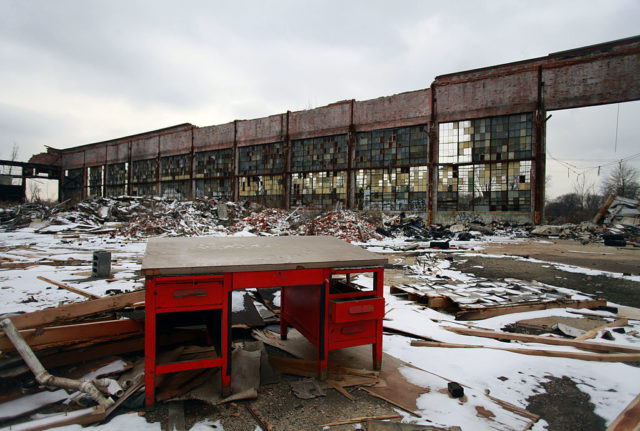
The Packard Automotive Plant in Detroit, Michigan was a symbol of American industrial history and automotive innovation. Construction began in 1903, and it served as the production site for luxury automobile manufacturer Packard Motor Car Company. The plant‘s architecture and sprawling complex reflected the grandeur and ambition of the brand during its peak.
However, by the mid-20th century, the company faced financial difficulties and competition, leading to its decline. The plant ceased operations in 1956 and was eventually abandoned. Today, its decaying structures and remnants stand as a symbol of Detroit’s economic decline over the decades, with part of it demolished by the city.
Chippewa Lake Park – Ohio
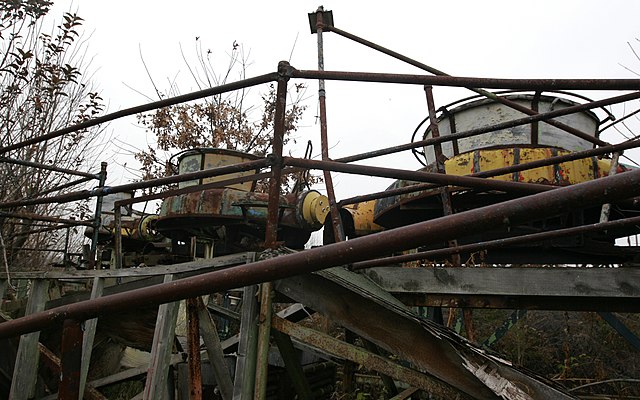
Ohio‘s Chippewa Lake Park was a recreational destination that captivated visitors with its charm and variety of attractions, from its opening in 1878 until its closure in ’78. It featured a range of entertainment options, including roller coasters, a carousel and picturesque lakefront views, creating a vibrant atmosphere for families and thrill-seekers. Its setting on the shores of Chippewa Lake added to its appeal, making it a popular spot for summer outings.
However, as the amusement park faced increased competition and changing recreational trends, it struggled to stay afloat. Today, the site remains largely abandoned, with remnants of the park’s once-bustling rides and structures poking out through the brush.
Pines Resort – Catskill Mountains, New York
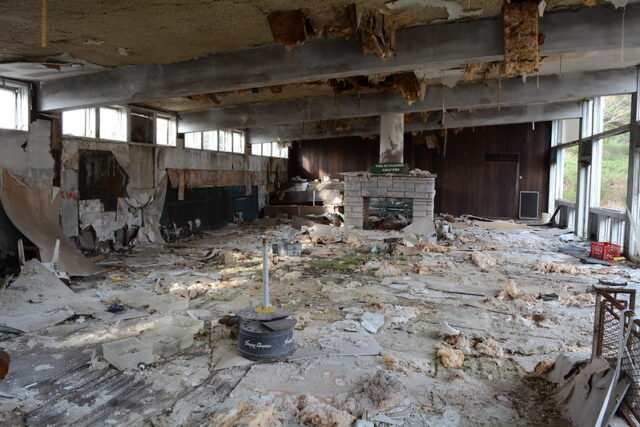
Pines Resort, nestled in the Catskill Mountains, was renowned for its picturesque setting, luxurious accommodations, and a range of recreational activities that attracted visitors seeking both relaxation and adventure. With its sprawling grounds and amenities, it became a popular escape for vacationers and celebrities alike.
However, like many resorts in the Catskills, Pines Resort faced declining popularity and economic challenges as the 20th century progressed. The property has since become a shadow of its former self, with remnants of its past grandeur serving as a reminder of the Catskills’ once-thriving resort culture.
Ohio State Reformatory – Mansfield, Ohio
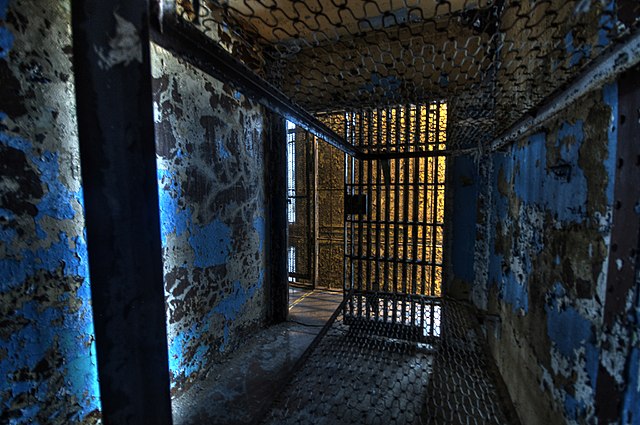
The Ohio State Reformatory (also known as the Mansfield Reformatory) in Mansfield, Ohio, opened in 1896. The facility was designed in the Gothic Revival style, featuring towering spires, intricate stonework and a sprawling campus.
It initially aimed to reform young male offenders, with a focus on education and vocational training, but, over time, the prison’s conditions deteriorated, leading to overcrowding and harsh treatment. The reformatory gained further attention through its use as a filming location for the 1994 movie, The Shawshank Redemption.
After closing as a functioning prison in 1990, the site became a popular spot for historical tours and paranormal investigations.
Williams Grove Amusement Park – Pennsylvania
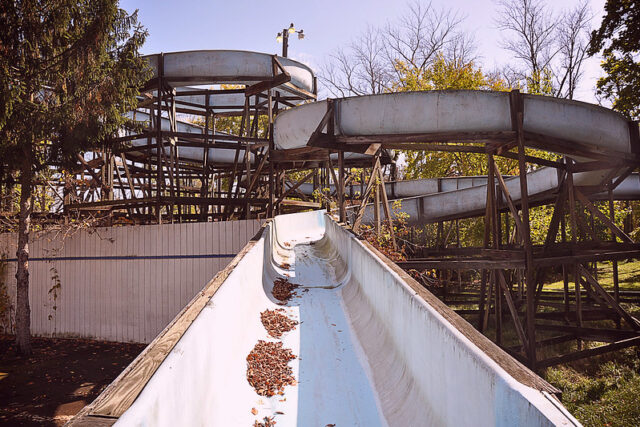
Pennsylvania’s Williams Grove Amusement Park was a cherished destination for family fun and entertainment from 1850-2005. One of the oldest amusement parks in the United States, it boasted a range of attractions, including classic rides like the carousel, bumper cars and a wooden roller coaster.
The park’s charming atmosphere was enhanced by its picturesque setting and the nostalgic appeal of its vintage amusements. In addition to its rides, Williams Grove was known for its traditional picnic areas and live entertainment, which drew visitors from near and far.
Despite its beloved status and efforts to preserve its legacy, the park faced challenges from changing entertainment trends and economic pressures, which ultimately led to its closure.
Eastern State Penitentiary – Philadelphia, Pennsylvania
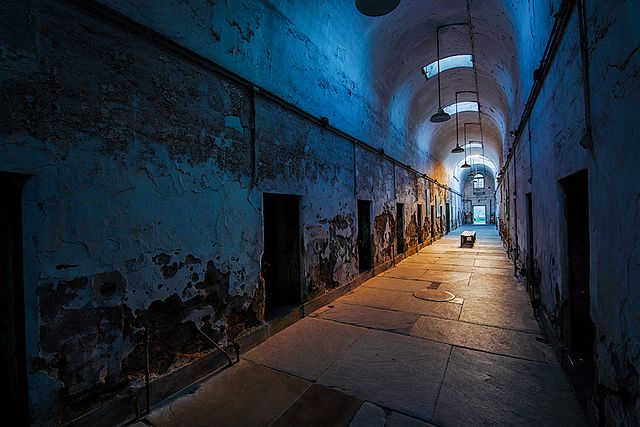
Eastern State Penitentiary in Philadelphia, Pennsylvania, is a landmark of penal history. Opened in 1829, the facility was one of the first to implement the “Pennsylvania System,” which emphasized solitary confinement and rehabilitation through isolation. The prison’s design, with its radial layout (individual cells radiating from a central hub), was revolutionary and aimed to promote reflection and penitence.
Over the years, the penitentiary became known for its harsh conditions and reform failures, leading to its closure in 1971. Prior to this, however, it housed some of history’s most notorious criminals, including Al Capone.
More from us: USS Sachem (SP-192): ‘The Ghost Ship’ Left Abandoned in a Creek After Serving in Both World Wars
Want to become a trivia master? Sign up for our Today In History newsletter!
Today, it’s preserved as a historic site and museum, offering tours and exhibits that explore its history, the evolution of the penal system in the United States, and the broader implications of incarceration and reform.
